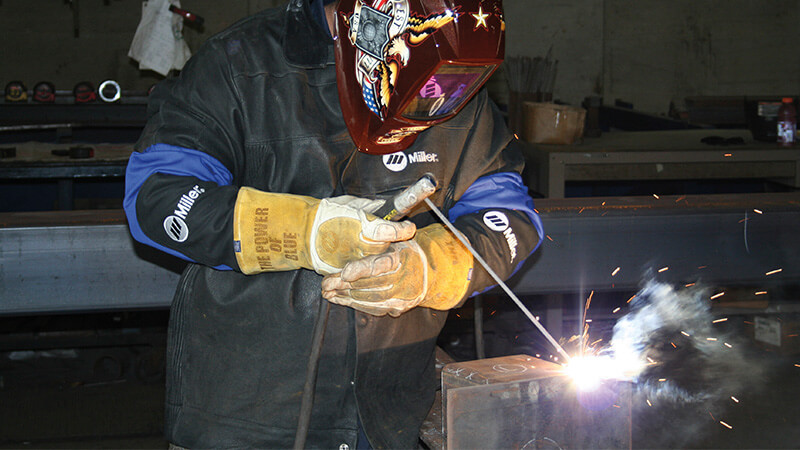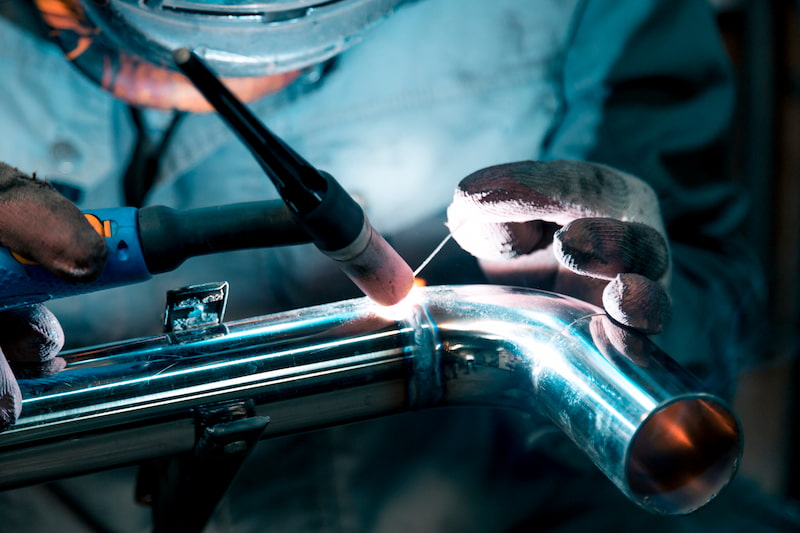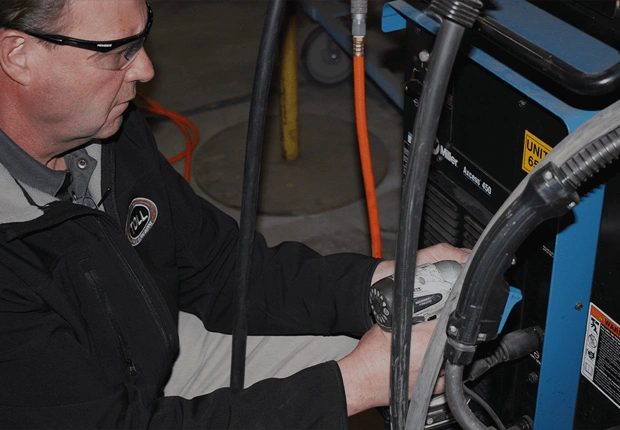Common Welding Repair Service Issues and Exactly How to Address Them Properly
Welding fixings typically come across a variety of problems that can endanger the integrity of the final product. Typical problems include poor penetration, porosity, and misalignment, to name a few. Each issue offers distinct challenges that require details techniques for resolution. Understanding these concerns is necessary for welders aiming to improve their end results and skills. This discussion will discover these usual welding fixing issues and effective methods to resolve them.
Inadequate Penetration
Inadequate infiltration happens when the weld metal fails to fully fuse with the base material, leading to weak joints and possible structural failures. This issue often originates from insufficient warmth input, wrong electrode angle, or improper welding speed. Welders might run into inadequate infiltration because of a miscalculation of the necessary parameters for a details material thickness or kind. Furthermore, contamination on the base product's surface area can impede reliable bonding, aggravating the issue. To resolve poor penetration, welders ought to ensure appropriate settings on their tools and maintain a clean job surface area. Regular examination of welds is suggested to recognize any deficiencies early, permitting timely modifications and the avoidance of endangered architectural stability in welded assemblies.
Porosity
Porosity is a typical issue in welded joints that shows up as small gas bubbles entraped within the weld steel. This defect can jeopardize the integrity of the weld, leading to minimized stamina and potential failing under anxiety. Montana Mobile Welding and Repair Belgrade. Porosity normally emerges from contamination, dampness, or incorrect welding methods, which permit gases to escape right into the liquified weld pool. To deal with porosity, welders need to ensure proper surface prep work, maintain a tidy workplace, and utilize appropriate welding specifications. In addition, picking the right filler product and shielding gas can minimize gas entrapment. Routine evaluation and screening of welds can help recognize porosity early, assuring timely rehabilitative actions are taken, thereby protecting the top quality and reliability of the welded structure
Misalignment
Imbalance in welding can occur from various variables, including incorrect setup and thermal growth. Recognizing the source is crucial for effective resolution. Numerous modification strategies are offered to straighten parts and guarantee structural integrity.
Reasons for Misalignment
Welding misalignment often stems from a range of underlying concerns that can jeopardize architectural integrity. One primary reason is incorrect fit-up of components before welding, which can cause gaps and irregular surface areas. Variations in thermal expansion during the welding process can also cause distortion, specifically if the materials being joined have different coefficients of development. Furthermore, inadequate fixturing and clamping might fail to hold elements firmly in area, bring about motion during welding. Badly conserved tools, including welding equipments and devices, might introduce disparities in the weld bead, further adding to misalignment. Operator mistake, stemming from inadequate training or experience, can likewise play a considerable function in producing misaligned welds.

Adjustment Methods Readily Available
Addressing imbalance efficiently needs a combination of rehabilitative methods customized to the details concerns available. One typical technique is using fixtures or jigs to hold parts in the proper setting throughout welding, guaranteeing constant positioning. In addition, preheating the products can help in reducing distortion and improve fit-up. For substantial imbalance, mechanical adjustment methods, such as utilizing hydraulic jacks or clamps, can be utilized to remedy the position before welding. Post-weld warmth therapy might also be essential to alleviate anxieties brought on by misalignment. Careful assessment and change throughout the configuration stage can protect against imbalance problems from ending up being considerable troubles, promoting a smoother welding procedure and boosting general architectural honesty.
Distortion
Distortion is a common obstacle in welding that can develop from numerous factors, including uneven cooling and heating. Understanding the root causes of distortion is necessary for carrying out effective prevention methods. Resolving this concern not only improves architectural integrity yet likewise boosts the overall high quality of the weld.
Sources of Distortion
When based on the intense warmth of welding, materials usually undergo adjustments that can bring about distortion. This sensation largely emerges from thermal development and contraction during the welding procedure. As the weld area warms up, the material expands; upon cooling, it acquires, which can produce inner anxieties. Furthermore, irregular home heating across a workpiece can aggravate these tensions, leading to bending or bending. The kind of product additionally plays a significant duty; metals with differing thermal conductivity and coefficients of development might react differently, bring about unforeseeable distortions. Moreover, bad joint style and insufficient fixturing can add to misalignment throughout welding, increasing the probability of distortion. Recognizing these reasons is vital for efficient welding repair work and avoidance techniques.
Prevention Techniques
Effective avoidance methods for distortion during welding focus on controlling heat input and ensuring correct joint layout. Keeping a consistent warm input assists to decrease thermal growth and contraction, which can cause distortion. Using methods such as pre-heating the work surface can additionally reduce the temperature slope, advertising consistent heating. Additionally, choosing proper joint layouts, such as T-joints or lap joints, can enhance stability and lower anxiety focus. Applying correct fixturing to safeguard the work surfaces in place additionally aids in keeping alignment throughout the welding process. Lastly, staggered welding sequences can disperse warm why not try these out a lot more uniformly, protecting against local distortion. By using these techniques, welders can considerably decrease the chance of distortion and enhance the total high quality of their welds.
Fracturing
Splitting is an usual problem run into in welding repair work, frequently arising from various aspects such as inappropriate cooling rates, material choice, or insufficient joint preparation. The incident of splits can significantly endanger the stability of the weld, causing prospective failures throughout operation. To address this issue, welders should first analyze the source, ensuring that products work and suitably picked for the certain application. Furthermore, regulating the air conditioning price during the welding procedure is crucial; fast air conditioning can generate stress and anxiety and bring about cracking. Proper joint style and preparation likewise contribute to decreasing go to website the risk. Implementing these methods can improve weld high quality and sturdiness, eventually decreasing the chance of cracking in ended up weldments.

Incomplete Combination
A significant problem in welding fixings is insufficient combination, which takes place when the weld metal does not adequately bond with the base material or previous weld passes - Welding. This problem can cause weak points in the joint, possibly jeopardizing the honesty of the welded framework. Variables adding to insufficient fusion consist of inadequate warmth input, incorrect welding method, and contamination of the surface areas being signed up with. To address this problem successfully, welders should ensure correct pre-weld cleaning and surface prep work, along with readjust their welding criteria to accomplish sufficient infiltration and fusion. Regular examination throughout the welding process can likewise help identify incomplete combination early, allowing for prompt corrective measures to enhance the general quality of the weld
Overheating
While welding fixings can improve architectural stability, overheating provides a substantial challenge that can bring about product degradation. Extreme warmth during welding can change the mechanical buildings of metals, causing reduced toughness, increased brittleness, and bending. This phenomenon is specifically essential in high-stress applications where architectural reliability is vital. Determining overheating can entail visual inspections for discoloration or distortion, along with checking temperature during the welding process. To minimize the risks related to overheating, welders need to utilize proper strategies, such as regulating warm input, adjusting travel speed, and utilizing ideal filler materials. Additionally, executing pre- and post-weld warm treatments can assist bring back material residential or commercial properties and improve the total high quality of the repair, guaranteeing lasting performance and safety and security.
Regularly Asked Questions
What Are the Typical Indications of a Welding Issue?

How Can I Evaluate My Welds for High quality?
To check welds for quality, one can make use of visual evaluations, ultrasonic screening, and radiographic approaches. Each technique assures structural stability, identifies issues, and verifies adherence to defined requirements, ultimately enhancing the reliability of the welded joints.
What Safety and security Preventative Measures Should I Take While Welding?
When welding, one ought to focus on safety by putting on proper individual safety devices, ensuring correct ventilation, securing combustible materials away, preserving a tidy workspace, and understanding environments to avoid injuries and crashes.
Can I Repair a Weld Without Redoing the Entire Joint?
Repairing a weld without renovating the entire joint is feasible, relying on the damages (Montana Mobile Welding and Repair Belgrade Fabrication). Techniques such as grinding, including filler product, or utilizing a welding procedure can properly deal with certain problems while protecting the surrounding structure
What Tools Are Essential for Reliable Welding Repair Works?
Essential devices for effective welding repairs include a welding machine, cable brush, grinder, safety equipment, clamps, and filler products. Each tool plays a vital duty in making sure quality and safety throughout the repair procedure. Porosity commonly develops from contamination, moisture, or incorrect welding strategies, which allow gases to leave into the liquified weld pool. Badly maintained tools, consisting of welding machines and devices, might introduce variances in the weld grain, more contributing to imbalance. When subjected to the intense warmth of welding, products often undergo adjustments that can lead to distortion. Splitting is an usual problem come across in welding repair services, usually resulting from numerous elements such as improper cooling rates, product selection, or inadequate joint prep work. A significant concern in welding repair work is insufficient combination, which occurs when the weld steel does not adequately bond with the base product or previous weld passes.